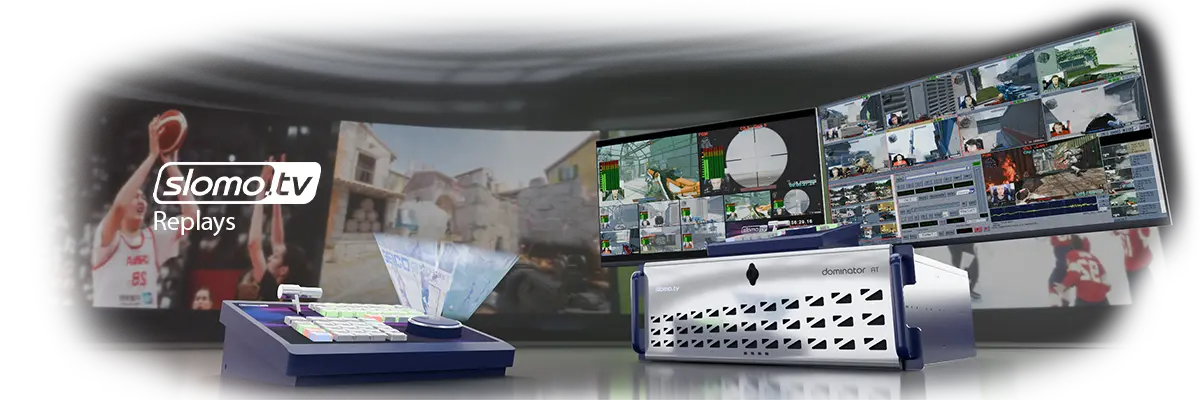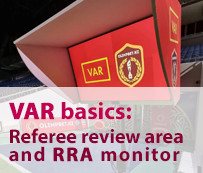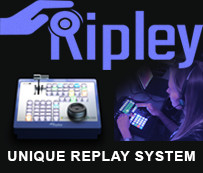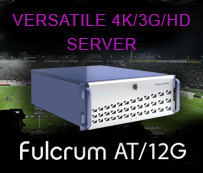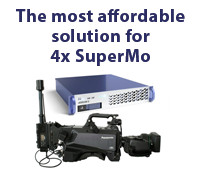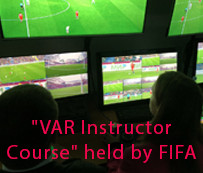Imagine how different the viewing perception of any sport would be without instant replays!
Sports replays with traditional tape recording technologies required from operators no less reaction and ability to anticipate the situation than from athletes themselves. It was necessary to wait until the end of the episode, stop recording, wind back the tape and then perform replay without missing at the same time further development. Magnetic tape allowed only sequential access. Those who are accustomed to this state of affairs don’t even think that it might be otherwise. But it is XXI century. In an era of tapeless technology the video recording channel is used just for that and nothing more.
Perhaps we are making a mistake indicating the number of recording channels for our equipment, instead of summarizing, as everybody else, all available channels. On the other hand, if we would follow the accepted industry tradition, resulting figures would seem quite unbelievable. After all, even the basic in our product line, a 3-channel recording system Simple R, will be described as 3+2+3 (8!) and Dominator 8+2+6 will be simply frightening. A formula for systems with ability to change channels mode would be impossible to understand!
So, rather than stun your with numbers, we will just explain that our multi-channel recording systems provide the ability to search for the right clip without stopping recording of the corresponding channel. Competing solutions, in contrast, use for searches one of the output channels. As a result, since search on a slomo.tv system does not use inputs or outputs, it is a "plus one channel", and not a "minus one channel". Considering that search at the same time can be conducted not only on any one channel, but on six channels at once (6 is due to limitations of human perception, not technology), the addition of six "search channels" is not a gimmick.
A similar problem can not be solved only by using fast disks drives. The “secret weapon” is our software that can “squeeze” every possible performance from the hardware, without sacrificing the stability and integrity of recorded footage. To reflect hardware advances, we continuously develop the slomo.tv software.
Do we need a lot of channels? Practice shows that a good broadcast of football game is provided by more than 20 cameras. And this is football, where action is focused on the ball. In track and field, winter sport and some other events, where there are many focus points, a lack of channels may lead to one significant event being overshadowed by another, sometimes a secondary one.
Super slow motion recording is a special case. Even the most sophisticated interpolation algorithms do not provide the same uncompromising image quality as a super speed camera. The price for slow motion replay quality is doubling or tripling the number of input channels. Thus, for simultaneous support of 4 super speed Sony cameras we have developed a special 12+1 system.
Sport replay is not just recording and playback. Without intuitive fast user interface it is impossible to quickly mark the selected material for instant replays. The systems multi-screen monitor (optionally two monitors) displaying all information, well-designed user interface, control console, mouse and keyboard allow the operator to concentrate on task at hand rather than finding the right lever or LCD panel at the most critical moment.
We support up to 2,000 playlists and up to 4,000 clips. We support operational replays without marks. Our customers have the ability to save an operational replay without creating a deferred clip. This feature was found extremely useful when marking and saving a clip for subsequent use was not needed.
Our replay machines can be networked by DirectConnect™. The same network can include our sport video adjudication system videoReferee®. As a result, it became possible to transfer data from a variety of cameras and other video materials necessary for creating replays and broadcast video effects.
All of our machines are constructed as single units, rather than sets of modules. The high channel density of the unit lowers space and power requirements, simplifies connectivity and improves process control.


